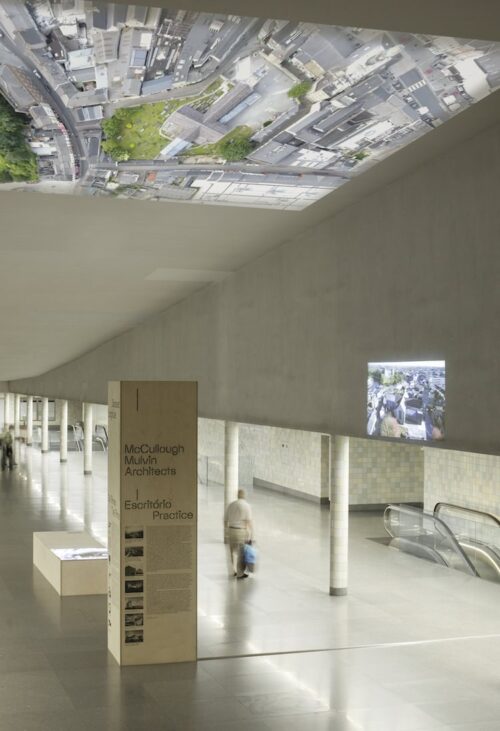"Displaced Longitude" exhibition in Sao Bento Metro Station, Porto, Portugal

The four week exhibition in the Porto Sao Bento metro station showcases the architectural work of McCullough Mulvin Architects in Dublin to a Portuguese and international audience. The main concourse of Sao Bento, located beside the main Porto railway station, is a much-used exhibition space in the city. It is appropriate that work from an Irish practice should be shown in Porto. The two countries share extraordinary similarities of location in Europe - the Atlantic, large neighbours to the East. Their differences are ones of latitude not longitude. The exhibition illustrates McCullough Mulvin’s architecture in Ireland and in India through seven current projects; buildings exploring the fertile relationship of architecture, nature and time - architecture like natural form in tense or loose geometries, or new adhering to old like moss to stones. The exhibition is through the medium of film within and around a timber pavilion in the main concourse. It comprises three films that are about current architectural projects - completed, in design evolution, one under construction. Two are of urban scale - Thapar University in the Indian Punjab and Trinity College in Dublin, where the practice has built three major projects in an historic university. Another two projects are palimpsests, partly new and partly old - St Mary’s Medieval Mile Museum in Kilkenny and the Military Archives project in Dublin, where new elements are like accretions on older ones. And three relate specifically to ideas of ‘constructed’ geographies - Kishoge School in west Dublin, the Beaufort Laboratory in Cork and Waterford Fire Station in Waterford City. All seen from one point, the films present the projects simultaneously but from different angles. They are about different architectural perceptions - as ideas, as realities, and somewhere between - perception enhanced by the monstrous capacity of drones. Some of the buildings cannot be fully understood without their ‘place’, others construct one, all are influenced by template of nature at the largest scale and the smallest scale of rocks, fissures, moss. The exhibition closed in October 2017. It was seen by over 100,000 people during its run. The images below show the three films in the station. The exhibition is now moving to Valencia in Spain and back to Ireland in early 2018.
-
Category:
- Exhibitions